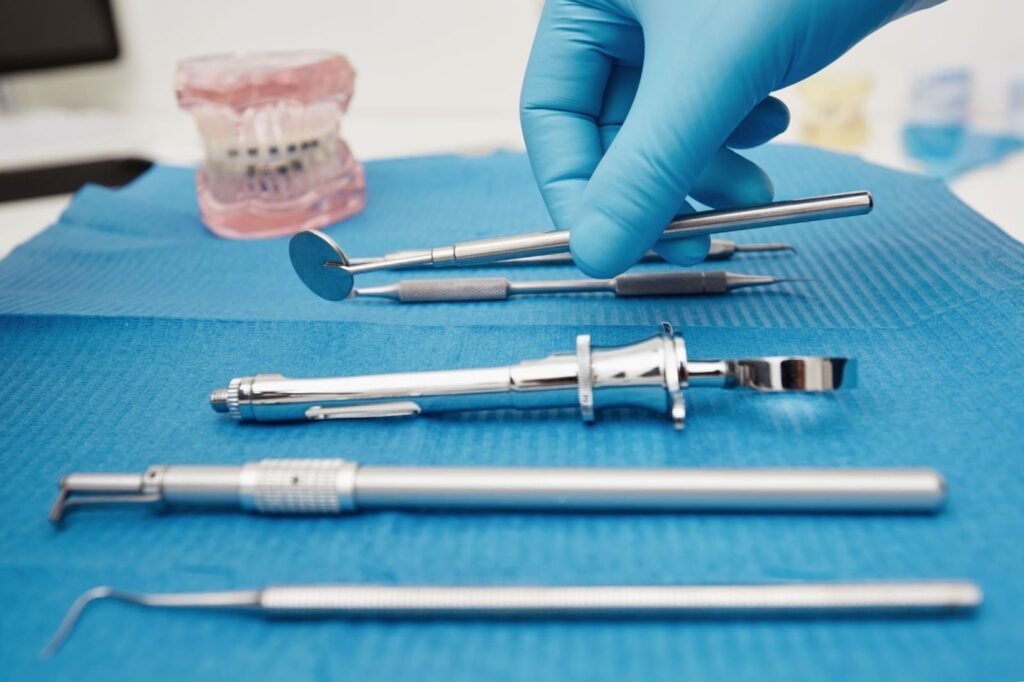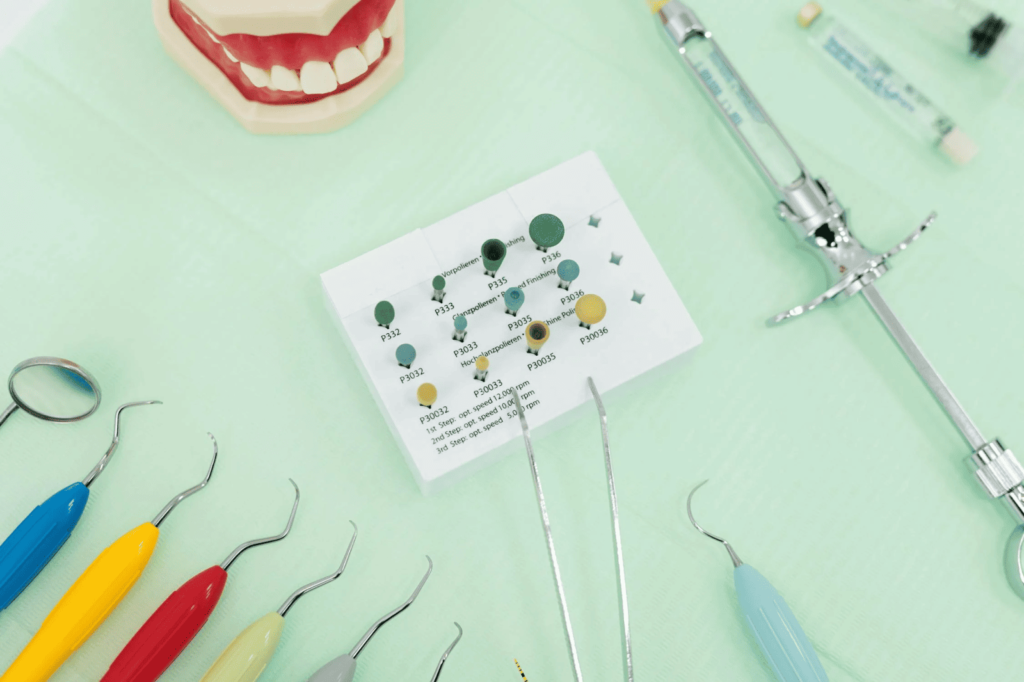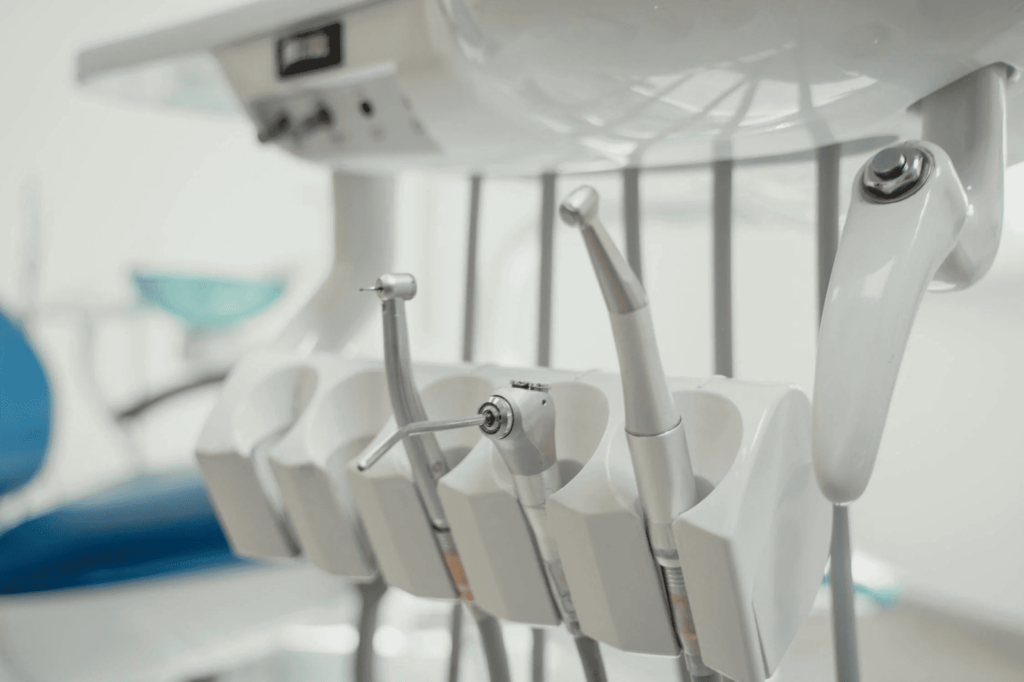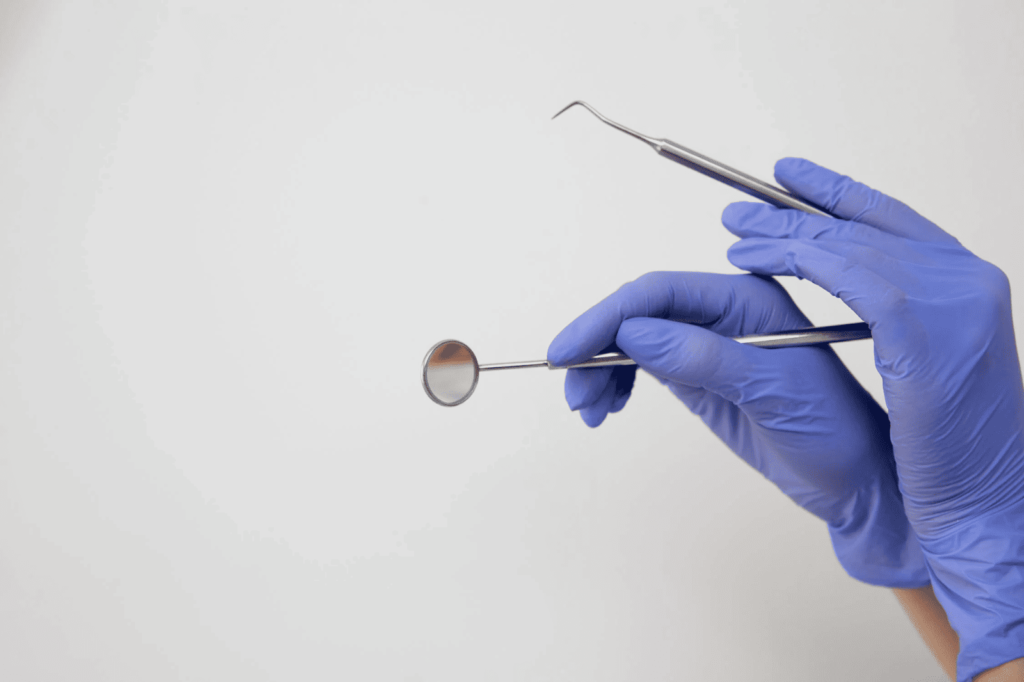Dental burs are the unsung heroes of modern dentistry. They handle tasks like shaping, cutting, and polishing teeth, making them essential tools in nearly every dental procedure. Knowing the different types of burs and their specific uses can help dentists work more efficiently and ensure their patients are comfortable. In this guide, we’ll explore the world of dental burs—their materials, shapes, and applications—and share tips for picking the best ones for your practice.

What is a Dental Bur?

Dental burs are specialized rotary instruments used in dentistry to perform a wide range of procedures. They have been essential tools in dental care since the late 19th century, evolving from simple hand tools into precise rotary devices.
Dental burs are essential for shaping teeth, removing tooth material, and preparing teeth for restorations. Burs are like the artist’s paintbrush used by a dentist to ensure accuracy and perfection.
A bur is made of three main components:
- Shank: Shank is the end of the bur that can be inserted into a handpiece.
- Neck: This is the small rod that links the shank with the head.
- Head: The head is the working end of the bur and makes a cut and modifies.
During dental surgery, the cutting tools work together to complete the task at hand. Also, the variety of dental burs ensures that each type serves its purpose. Dental burs are primarily made from three materials: tungsten carbide, diamond, and stainless steel.
Tungsten carbide dental bur is highly durable and known for its strength, making it suitable for tough cutting tasks. Diamond burs are coated with industrial-grade diamonds, providing precision and fine detail for delicate procedures. Stainless steel dental burs, while more affordable, are commonly used for less rigorous tasks, offering a balance of cost-effectiveness and functionality. For example, Aidite Dental Burs are renowned for their durability and precision, making them ideal for tough cutting tasks.
Different Types of Dental Burs

Dental burs are usually classified according to their shape and material. Different types of dental burs are made for specific jobs; thus, a dentist is expected to make the right selection for a certain operation. Let’s break it down further:
Material-Based Classification
- Tungsten Carbide Dental Burs: In the field of Dentistry, these are some of the strongest burs. They are especially useful for cutting the enamel and dentin when drilling, shaping, and preparing cavities. Aidite tungsten carbide dental burs excel in longevity and sharpness, making them a reliable choice for cavity preparation and crown work.
- Diamond Burs: These types of burs are designed to be the best for finishing and polishing restorations. It has a diamond coating on its surface, which makes it a highly effective tool when contouring a crown, bridge, or veneer. Excellent for procedures that require the end result to have a smooth and polished finish.
- Stainless Steel Dental Burs: These are comparatively soft as compared to both the tungsten carbide and diamond burs but are suitable for basic procedures; their efficiency is unrivaled. Commonly they are used in the process of refining a restoration or in adjusting a temporary crown.
Shape-Based Classification

Form determines the application of a dental bur; some of the most common forms and their applications are:
- Round Burs: Perfect for cavity preparation and removing decay. They’re also used to create access points for root canal treatments.
- Pear-Shaped Dental Burs: This bur is best for the enlargement of cavities for better fillings. It has a wider cutting surface to be used on larger preparations.
- Flame Burs: These are the best options when a smooth filling surface is to be created, the flame burs can also be used for shaping teeth in various aesthetic procedures.
- Tapered Burs: These types of burs assist in detailing the cuts as well as beveling around the cavity to shape with precision edges making it easier to create intricate patterns.
- Fissure Dental Burs: Fissure dental burs come in straight and cross-cut designs, making them perfect for preparing the occlusal surfaces of molars or removing old fillings. Their straight edges allow for clean and precise cuts.
In addition to these general-purpose burs, specialty burs exist for intricate procedures in fields like endodontics and prosthodontics. These include surgical burs, carbide finishing burs, and even tiny burs designed for pediatric dentistry.
Dental Burs and their Uses

Dental burs are versatile tools used in nearly every dental procedure. Here are some of their most common applications:
- Cavity Preparation: Removing decayed material and shaping cavities is one of the primary uses for dental burs. Round and pear-shaped dental burs are particularly effective for this purpose.
- Crown and Bridge Preparation: To ensure a perfect fit for crowns and bridges, burs are used to shape and prepare the underlying tooth structure. Flame and tapered burs are especially useful here.
- Tooth Contouring and Shaping: After fillings or other restorative procedures, dental burs help refine the tooth’s shape, ensuring it looks natural and feels smooth to the patient.
- Polishing and Finishing Restorations: Aesthetic dentistry relies heavily on burs to polish and finish restorations like veneers, crowns, and fillings. Diamond burs, in particular, are excellent for achieving a mirror-like finish.
- Specialty Procedures: In addition to general dentistry, dental burs are vital in specialized fields. For example, endodontists use them to access root canals, while prosthodontists rely on them for intricate denture adjustments.
By using the right bur for each task, dentists can ensure precise results, reduce procedure time, and provide a more comfortable experience for their patients.
How to Choose the Right Dental Bur

Selecting the right dental bur can significantly impact the efficiency and success of a procedure. Here are some factors to consider:
- Type of Procedure: The nature of the dental work being performed is the first thing to consider. Aidite burs, available in various materials and shapes, provide versatile options for all procedures. For example, cavity preparation may require tungsten carbide or pear-shaped dental burs, while polishing restorations call for diamond burs.
- The working speed of a handpiece: A high-speed handpiece must only be used with high-speed burs to avoid cage damage, while for low-speed procedures low-speed burs must be used.
- Material of the Bur: Each material has its strengths. Tungsten carbide dental bur is great for cutting hard surfaces, diamond excels at precision work, and stainless steel is perfect for lighter tasks.
- Bur Quality: Good dental burs are made of better materials and are more durable. This means patients experience less discomfort during the procedures as their time is reduced while the surgeon’s tools are effective enough to get the grabs done effectively. Spending money on great quality tools is paramount for a profitable venture in the long run.
- Size and Shape: When choosing a dental bur, the size and shape should be based on the task. For example, if you need to work on a larger area of the tooth, a bigger bur is ideal. However, for more detailed and precise work, a smaller bur allows for better control and accuracy in handling finer tasks.
Frequently Asked Questions (FAQs)
What material is best for dental burs?
Round and diamond burs are ideal for tasks such as polishing and shaping; however, if the task requires focusing on precision cutting, a tungsten carbide dental bur may come in handy. If funds are limited, stainless steel burs can also be a good option for the time being.
How do I know which bur to use for cavity preparation?
Round or pear-shaped dental burs are ideal for cavity preparation, and pear-shaped burs are great for bigger cavities.
Can diamond burs be used for cutting?
Diamond burs are primarily used for shaping or polishing tools, but soft materials such as cutting can also be done by using them.
How to clean dental burs?
Dental burs should be cleaned and sterilized after each usage. They don’t need to be disposed of after a single usage, proper cleaning gives them an extended life.
Why are high-speed burs important in dental procedures?
Cutting and shaping dental tissue is the job of high-speed burs which efficiently and effectively do the task, helping to reduce treatment time.
Wrap Up
Choosing the right dental bur is essential for precision and patient comfort in every procedure, from cavity preparation to polishing. In this guide, the burs are made from different materials and different shapes; Tungsten carbides, diamond burs, and stainless steel dental burs have been explored, along with practical tips on picking them according to your needs. Through this application, dentists will be able to work more efficiently and get good results.
Many modern dentistry procedures require the use of proper dental burs as they not only improve patient care standards but also reduce the time for every single procedure, meaning the workstation is more streamlined and efficient.



